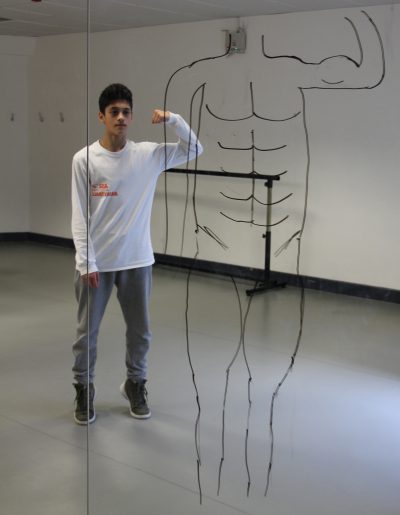
How do you react when you look at yourself in the mirror? Do you smile at your reflection and think how blessed you are to have such a wonderful body, or do you immediately start distinguishing flaws and body shaming yourself?
Especially during middle school years, students may begin to perceive themselves differently, but students need to learn to love their bodies for what they are. Eighth grade student Darby Craig said, “You need to be positive about who you are and what you want. Focus on yourself and feel proud of who you are.” He then added, “Look in the mirror and say, this is me. I don’t ever want to feel bad about the way I look.”
This concept is called body image, and it is very important to understand. Body image is not based on how one looks, but how one feels about their own body. It reflects not only one’s physical appearance but how people see themselves as individuals and the confidence they have. Each person sees their body differently; some hold positive body images, but unfortunately, many hold negative views about their bodies. A person with a positive body image is someone who accepts themselves and their appearance. Their body may not match what they believe to be the ideal body types, but they are able to understand the importance of embracing themselves. A negative body image is not something people are born with; it is learned. This usually forms when someone feels as though their body does not match certain ideals. ASL students are taught about body image in health class, and are told that this will often happen subconsciously and can sometimes lead to low self esteem and self image.
Many students may feel they should look a certain way, and these influences usually come from the pressures of the media. ASL students live in a time where a specific standard of beauty is incredibly valued, and this standard does not fit the majority of people. The media can impact body image and lessen self value due to the comparisons people usually make from themselves to what they see all around them: models on billboards, in magazines, or posting on social media are a few examples. It allows an illusion of control, a way for teens to believe they can dictate others’ perception of them. Most of the time teens end up comparing themselves to a constructed version of reality. The media that people consume celebrates very little diversity amongst body types which leads people feeling dissatisfied with themselves and the pressure to look a certain way.
People’s bodies do so much for them every day, in so many more ways that just how they look. People should love each other for who they are, and not the way they look. If students acknowledge the positive qualities about their body and love their body for what it does for them, it would be a big step towards improving body image. Eighth grade student Olivia Benjamin-MacDonald said, “We should learn to embrace ourselves more and love ourselves and each other.”
